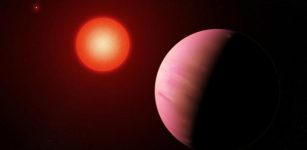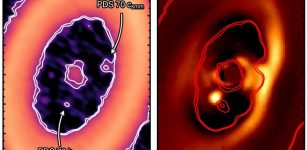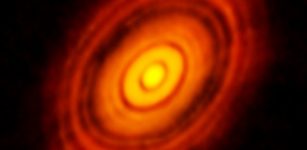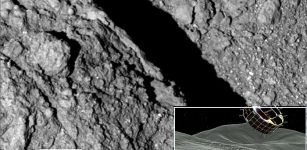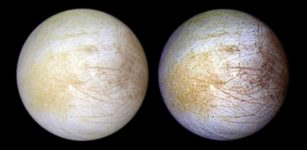Planet With Shortest Orbital Period Ever – Observed
Eddie Gonzales Jr. – MessageToEagle.com – An exoplanet orbiting a star in just over 18 hours, the shortest orbital period ever observed for a planet of its type, report astronomers from the University of Warwick.
 Artist’s impression of a hot Jupiter orbiting close to a star. Credits: Mark Garlick/University of Warwick
Artist’s impression of a hot Jupiter orbiting close to a star. Credits: Mark Garlick/University of Warwick
It means that a single year for this hot Jupiter – a gas giant similar in size and composition to Jupiter in our own solar system – passes in less than a day of Earth time.
Scientists believe that it may help to solve a mystery of whether or not such planets are in the process of spiraling towards their suns to their destruction.
The planet NGTS-10b was discovered around 1000 light-years away from Earth as part of the Next-Generation Transit Survey (NGTS), an exoplanet survey based in Chile that aims to discover planets down to the size of Neptune using the transit method.
This involves observing stars for a telltale dip in brightness that indicates that a planet has passed in front of it.
At any one time, the survey observes 100 square degrees of the sky which includes around 100,000 stars.
Out of those 100,000 stars this one caught the astronomers’ eye due to the very frequent dips in the star’s light caused by the planet’s rapid orbit.
“We’re excited to announce the discovery of NGTS-10b, an extremely short period Jupiter-sized planet orbiting a star not too dissimilar from our Sun,” lead author Dr. James McCormac from the University of Warwick Department of Physics said in a press release.
“We are also pleased that NGTS continues to push the boundaries in ground-based transiting exoplanet science through the discovery of rare classes of exoplanets. Although in theory, hot Jupiters with short orbital periods (less than 24 hours) are the easiest to detect due to their large size and frequent transits, they have proven to be extremely rare. Of the hundreds of hot Jupiters currently known there are only seven that have an orbital period of less than one day.”
NGTS-10b orbits so rapidly because it is very close to its sun – only twice the diameter of the star which, in the context of our solar system, would locate it 27 times closer than Mercury is to our own Sun.
It is perilously close to the point that tidal forces from the star would eventually tear the planet apart.
The planet is likely tidally locked so one side of the planet is constantly facing the star and constantly hot – the astronomers estimate the average temperature to be more than 1000 degrees C. The star itself is around 70% the radius of the Sun and 1000 degrees cooler than the Sun, about 4000 degrees.
“It’s thought that these ultra-short planets migrate in from the outer reaches of their solar systems and are eventually consumed or disrupted by the star,” co-author Dr. David Brown said.
Co-author Dr. Daniel Bayliss said: “Over the next ten years, it might be possible to see this planet spiraling in. We’ll be able to use NGTS to monitor this over a decade. If we could see the orbital period start to decrease and the planet starts to spiral in, that would tell us a lot about the structure of the planet that we don’t know yet.
Written by Eddie Gonzales Jr. – MessageToEagle.com Staff

